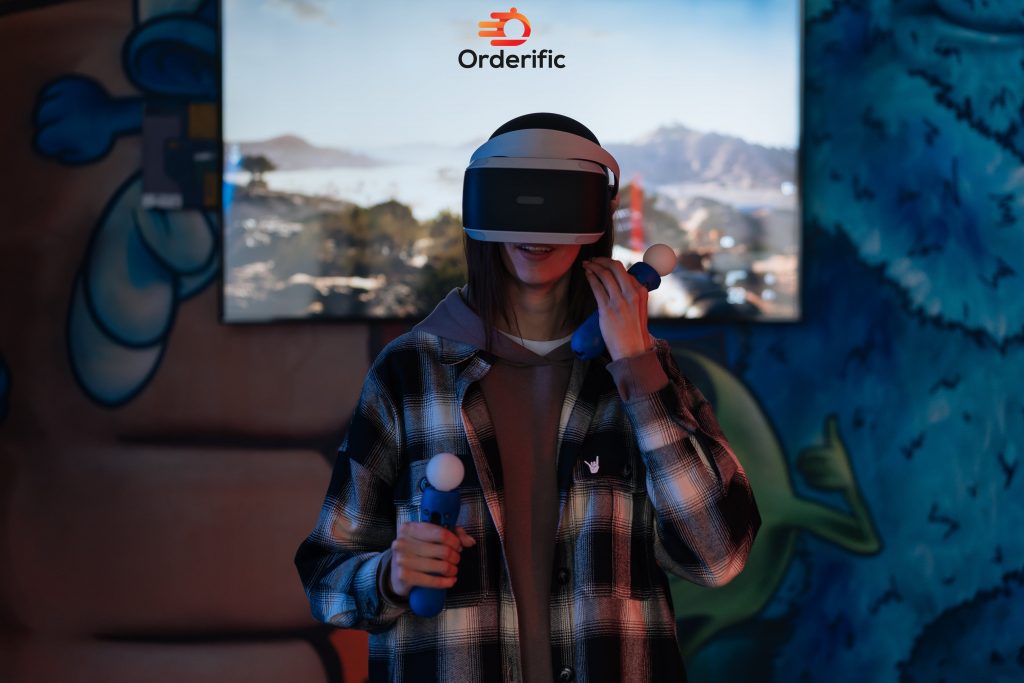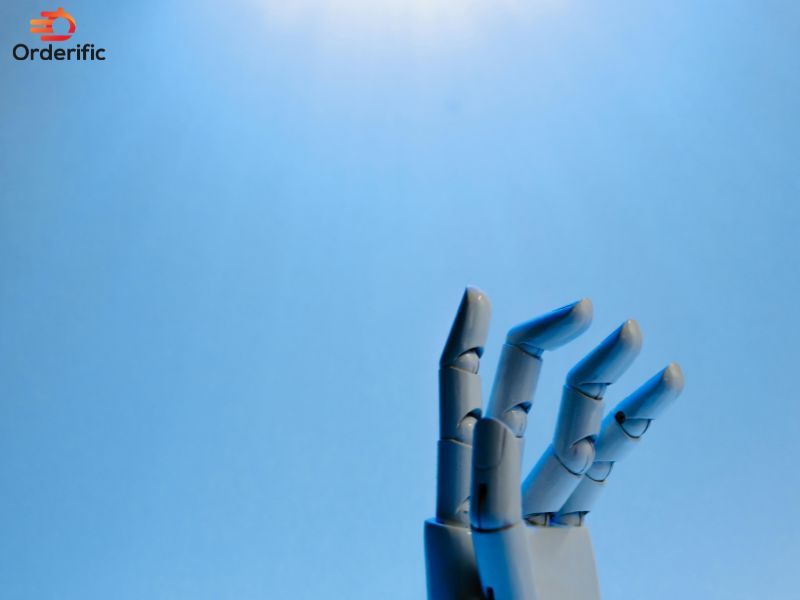Introduction
In the dynamic café industry, predictive inventory management is paramount. Leveraging artificial intelligence (AI) technologies like machine learning, deep learning, and generative AI empowers cafés to revolutionize their inventory systems. AI tools offer intricate insights through data science, pushing the boundaries of ‘new AI.’ From Google Cloud-based AI systems to weak and strong AI models that master natural language processing, the potential is vast. These AI capabilities, including computer vision, help cafes anticipate customer demand, reducing waste and increasing profitability. AI ethics also play a crucial role in this digital transformation, ensuring these technologies are used responsibly. This is the dawn of a new era in inventory management, all thanks to AI.
The Role Of AI In Cafe Management Systems: Enhancing Efficiency And Personalization
#1: Automation For Efficiency
The automation capabilities of AI significantly enhance efficiency in café management. Particularly, AI tools that harness machine learning and deep learning technologies bring about transformative changes. These tools analyze vast datasets, drawing on data science insights to make accurate predictions about inventory requirements. The new AI models, such as those making use of Google Cloud infrastructure, have advanced beyond weak AI to incorporate elements of strong AI. This progression heavily implicates natural language processing and computer vision, broadening AI’s capabilities in streamlining café operations.
Elon Musk, a notable figure in AI development, has shown us the potential of neural networks—an integral part of these AI technologies. Neural networks mimic human intelligence, enabling AI to learn from experience, much like how a barista learns to manage the café operations over time.
Interestingly, AI chatbots, utilizing strong AI, can handle customer interactions, freeing up human resources for other essential tasks. These AI systems, honed by the likes of John McCarthy in San Francisco, are also imbued with AI ethics, ensuring the responsible use of such powerful technology.
The blend of computer vision and natural language processing is particularly intriguing. The former empowers AI to accurately recognize and keep track of inventory, while the latter allows it to understand and process customer orders quickly and accurately. Together, they form an AI algorithm that effectively manages inventory—much like chess champion Deep Blue considering its next move. AI is no longer a narrow field. It encompasses varying AI models and capabilities that are continually expanding, and generative AI is the latest addition to this arsenal.
#2: Personalization For Enhanced Guest Experiences

The integration of AI into cafe management has made personalization a tangible reality, significantly enhancing guest experiences. AI’s generative abilities play an instrumental role in this endeavor. Leveraging natural language processing and computer vision, AI can process customer preferences and behavior, crafting personalized suggestions that resonate with individual customers, similar to Spotify’s song recommendations.
The strength of AI lies in its capacity to process large datasets quickly and seamlessly. As a result, cafes can now predict customer preferences, offering personalized dishes or beverages, and suggesting items based on weather, time of day, or even mood. The unique blend of computer vision and natural language processing allows AI to accurately identify customer preferences, enabling cafes to anticipate and meet individual needs with precision.
Moreover, AI chatbots can interact with customers, offering a smooth ordering process. This aspect of strong AI enhances customer experience by ensuring timely and accurate service, as well as freeing up human resources for more intricate tasks.
In conclusion, AI’s role in inventory management and customer service in cafes is transformative. From streamlining operations through computer vision and natural language processing to creating bespoke experiences with generative AI, the capabilities are limitless. It truly is akin to chess champion Deep Blue considering its next move – strategic, intelligent, and ever-evolving.
#3: Data-Driven Decision Making
Utilizing the power of AI, cafes can now make data-driven decisions, enhancing their inventory management process. The insights generated by AI, including natural language processing and computer vision, can guide the decision-making process, ensuring it is based on factual, accurate data rather than gut instincts. This approach minimizes human error, streamlining operations and enabling cafes to meet customer demand more accurately.
For instance, AI’s computer vision can monitor inventory levels in real-time, providing precise data about the quantity and condition of items. This information forms the basis of an algorithm that predicts future inventory requirements based on past patterns, ensuring that cafes are neither overstocked nor understocked. The benefits of this predictive approach are twofold: it prevents waste due to spoilage of overstocked items and ensures that popular items are always available for customers.
The Role Of Natural Language Processing In AI-Driven Inventory Management
Natural language processing, another aspect of AI, plays a distinctive role in this data-driven decision-making process. It allows the AI to understand and interpret human language, including written and spoken customer orders. By analyzing this data, the AI can anticipate trends in customer preferences, and adjust inventory accordingly. For instance, if an analysis of past orders shows a rise in demand for a particular dish or beverage, the AI can recommend increasing the stock of the ingredients required for that item.
Natural language processing also enables AI chatbots to interact with customers, answer their questions, and take their orders. This functionality not only enhances the customer experience but also provides valuable data for inventory management. For example, if a customer frequently asks about a particular dish, the AI can suggest that this item be included in the inventory.
Generative AI: Crafting The Future Of Inventory Management
The combination of computer vision and natural language processing marks the beginning of a new era in AI, known as generative AI. This technology is capable of generating new content, creating fresh possibilities for personalized customer experiences.
For example, generative AI can analyze customer preferences and behavior, and based on this data, suggest new dishes or beverages that may appeal to them. This capability not only enhances the customer experience but also guides inventory management. By predicting customer preferences, generative AI enables cafes to keep their inventory stocked with items that are likely to be popular, reducing waste and increasing sales.
In conclusion, the integration of AI, particularly its computer vision, natural language processing, and generative AI capabilities, is revolutionizing inventory management in cafes. By enabling data-driven decision-making, these technologies ensure that cafes can meet customer demand accurately and efficiently, enhancing customer satisfaction and profitability.
#4: Kitchen Operations And Quality Control
AI’s prowess in the cafe industry extends to the heart of operations – the kitchen. Utilizing computer vision, AI can monitor ingredient quantities and quality, thereby maintaining high standards and reducing food waste. For instance, AI can determine the freshness of produce or detect anomalies like undercooked or overcooked food, ensuring consistent quality. It’s also instrumental in managing kitchen workflows. AI algorithms, powered by machine learning, can predict order patterns, facilitating efficient food preparation and delivery. With the help of natural language processing, AI can decipher customer orders, dietary needs, or feedback, allowing chefs to cater to individual preferences and make necessary adjustments.
The advent of generative AI also enables the creation of innovative recipes based on the analysis of vast culinary datasets, ushering in a new wave of creativity in the kitchen. In essence, AI’s incorporation into kitchen operations and quality control is akin to a grandmaster chess player orchestrating a game-winning strategy – meticulous, precise, and forward-thinking.
#5: Predictive Analytics For Inventory Management
AI’s predictive analytics capacities are revolutionizing inventory management in cafes. Through machine learning, Artificial intelligence can analyze extensive data, identifying patterns and trends, and thereby accurately predicting future inventory needs. This foresight helps to maintain optimal stock levels, reducing the likelihood of supply shortages or surpluses that can impact profitability and customer satisfaction. AI’s computer vision capabilities are also instrumental here, enabling real-time monitoring and management of inventory. It can detect low stock levels, identify items and their quantities, and even predict when replenishment is necessary. Meanwhile, natural language processing aids in understanding customer feedback on menu items, helping to tailor inventory to customer preferences.
The latest addition to AI’s skill set, generative AI, can also simulate various inventory scenarios, aiding strategic decision-making and planning. Ultimately, predictive analytics powered by Artificial intelligence significantly enhances inventory management, akin to a chess grandmaster planning several moves. AI’s role in inventory management is both transformative and indispensable, paving the way for efficient, intelligent, and personalized operations in the cafe industry.
#6: Smart Staff Scheduling
AI’s capabilities extend into the realm of smart staff scheduling in the café industry. Machine learning algorithms can analyze historical data such as peak hours, staff performance, and customer footfall to create efficient staff rosters. Natural language processing aids in understanding staff availability and preferences, ensuring that schedules are both effective and fair. The use of computer vision technology allows for real-time monitoring of staff performance and customer service levels. It can highlight areas of improvement and praise excellence, fostering a culture of continuous learning and development.
Generative AI can even simulate different staffing scenarios, providing insight into the potential outcomes of various scheduling decisions. This level of predictive capability in staff scheduling reduces labor costs, optimizes staff utilization, and enhances customer service. In essence, Artificial intelligence-driven staff scheduling is like a chess grandmaster crafting a winning strategy, where every move is calculated, every player’s potential is maximized, and every decision is backed by intelligent foresight.
#7: Predictive Maintenance For Equipment
AI’s predictive capabilities also extend to equipment maintenance in cafes. By utilizing machine learning, AI can analyze the historical performance data of kitchen appliances and detect any irregularities that may indicate upcoming malfunctions. This anticipatory approach allows cafes to schedule maintenance activities proactively, thus minimizing disruptions in operations and ensuring continuous, high-quality service. Moreover, the integration of computer vision technology can monitor the physical conditions of equipment in real time, identifying any visible signs of wear and tear. Coupled with natural language processing, AI can understand and process maintenance instructions or user feedback, contributing to the overall efficiency of the maintenance process. Generative AI, the latest addition to the AI toolkit, can simulate various equipment failure scenarios and provide insights into the best course of preventive action.
The utilization of Artificial intelligence for predictive maintenance in cafes is akin to a chess grandmaster anticipating an opponent’s moves – strategic, proactive, and result-oriented. This innovative approach transforms the traditional reactive maintenance strategies, enhancing operational efficiency, and prolonging equipment lifespan.
Conclusion
The transformative power of artificial intelligence in the café industry is undeniable. By harnessing AI technologies such as machine learning, computer vision, natural language processing, and generative AI, cafes can enhance efficiency, provide personalized service, make data-driven decisions, improve kitchen operations, manage inventory effectively, optimize staff scheduling, and even conduct predictive maintenance. These capabilities contribute towards optimizing café operations, resulting in increased profitability and superior customer satisfaction. Truly, the introduction of Artificial intelligence into café management is akin to the strategic foresight of a chess grandmaster—an amalgamation of careful planning, intelligent execution, and adaptability. As we move forward into the digital age, the potential for AI to revolutionize the café industry is boundless and exciting.
Are you keen on leveraging Artificial intelligence for your café operations? Orderific offers cutting-edge AI solutions tailored for the café industry. Contact us today to book a demo and explore how AI can transform your café business.
FAQs
How does AI contribute to predictive inventory management in cafes?
AI analyzes past sales data and predicts future inventory needs, ensuring optimal stock levels and reducing waste.
What benefits can cafes expect from implementing AI-based inventory solutions?
AI can enhance efficiency, provide personalized service, reduce waste, and increase profitability.
Can AI adapt to the unique inventory needs and challenges of different cafes?
AI can absolutely, be tailored to meet the unique needs of each café, providing customized inventory solutions.
How accurate is AI in predicting inventory needs and minimizing waste in cafes?
AI’s predictive accuracy is extremely high, significantly minimizing waste and optimizing inventory management in cafes.
What considerations should cafes keep in mind when integrating AI into their inventory management systems?
Cafes should ensure the AI system is user-friendly, scalable, and compatible with their existing systems, and that staff receive adequate training.













